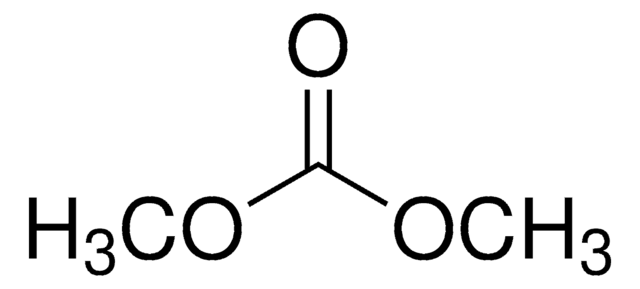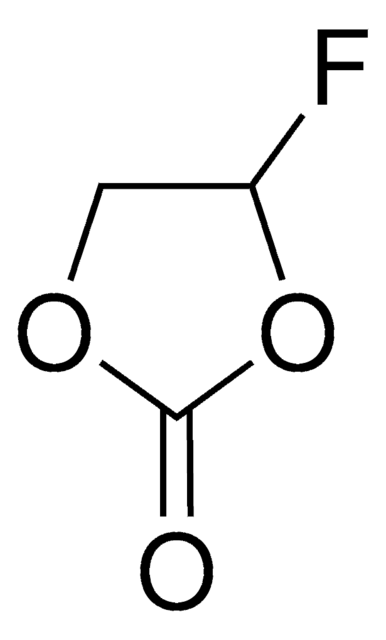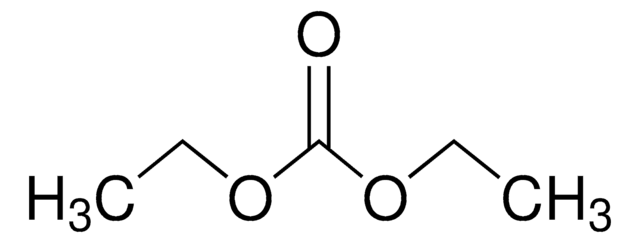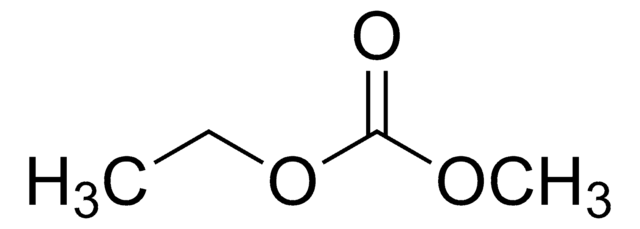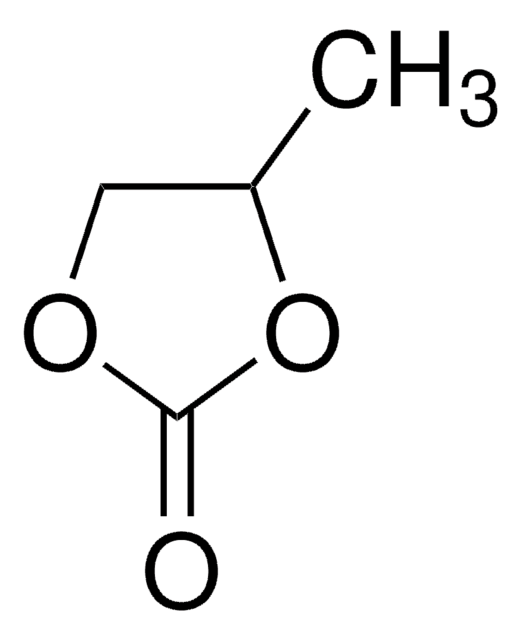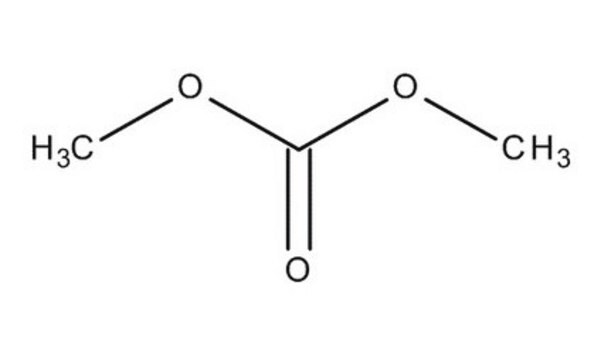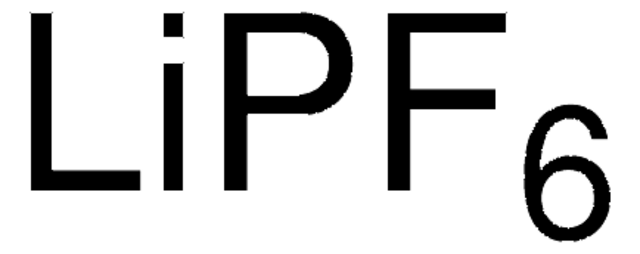900018
Diethyl carbonate
battery grade, ≥99%, acid <10 ppm, H2O <10 ppm
Synonyme(s) :
Diethyl ester
About This Item
Produits recommandés
Qualité
battery grade
Niveau de qualité
Densité de vapeur
4.1 (vs air)
Pression de vapeur
10 mmHg ( 23.8 °C)
59 mmHg ( 37.8 °C)
Essai
≥99%
Forme
liquid
Caractéristiques du produit alternatif plus écologique
Less Hazardous Chemical Syntheses
Safer Solvents and Auxiliaries
Design for Degradation
Learn more about the Principles of Green Chemistry.
sustainability
Greener Alternative Product
Impuretés
≤10 ppm H2O
≤10 ppm acid
Indice de réfraction
n20/D 1.384 (lit.)
pb
126-128 °C (lit.)
Pf
−43 °C (lit.)
Densité
0.975 g/mL at 25 °C (lit.)
Application(s)
battery manufacturing
Autre catégorie plus écologique
, Aligned
Chaîne SMILES
O=C(OCC)OCC
InChI
1S/C5H10O3/c1-3-7-5(6)8-4-2/h3-4H2,1-2H3
Clé InChI
OIFBSDVPJOWBCH-UHFFFAOYSA-N
Vous recherchez des produits similaires ? Visite Guide de comparaison des produits
Description générale
Application
Autres remarques
Informations légales
Produit(s) apparenté(s)
Mention d'avertissement
Warning
Mentions de danger
Conseils de prudence
Classification des risques
Flam. Liq. 3
Code de la classe de stockage
3 - Flammable liquids
Classe de danger pour l'eau (WGK)
WGK 1
Point d'éclair (°F)
77.0 °F - closed cup
Point d'éclair (°C)
25 °C - closed cup
Faites votre choix parmi les versions les plus récentes :
Déjà en possession de ce produit ?
Retrouvez la documentation relative aux produits que vous avez récemment achetés dans la Bibliothèque de documents.
Les clients ont également consulté
Articles
Dr. Schmuch, Dr. Siozios, Professor Dr. Winter, and Dr. Placke review the challenges and opportunities of nickelrich layered oxide cathode materials. They discuss production processes for the layered oxide cathode materials as well as their chemistry and morphology.
Dr. Sun reviews the recent advances in solid-state rechargeable batteries and cover the fundamentals of solid electrolytes in solid-state batteries, the theory of ion conduction, and the structures and electrochemical processes of solid-state Li batteries.
Due to the adverse impact of the continued use of fossil fuels on the earth’s environment and climate, researchers have been asked to develop new approaches for producing power using renewable sources like wind and solar energy
Here, we present a short review of ionic liquid electrolytes used in state-of-the-art rechargeable batteries including high performance and low-cost aluminum batteries, non-flammable Li-based batteries, and high-cycling and stable dual-graphite batteries. We also outline the key issues explored so as to identify the future direction of IL development.
Notre équipe de scientifiques dispose d'une expérience dans tous les secteurs de la recherche, notamment en sciences de la vie, science des matériaux, synthèse chimique, chromatographie, analyse et dans de nombreux autres domaines..
Contacter notre Service technique
